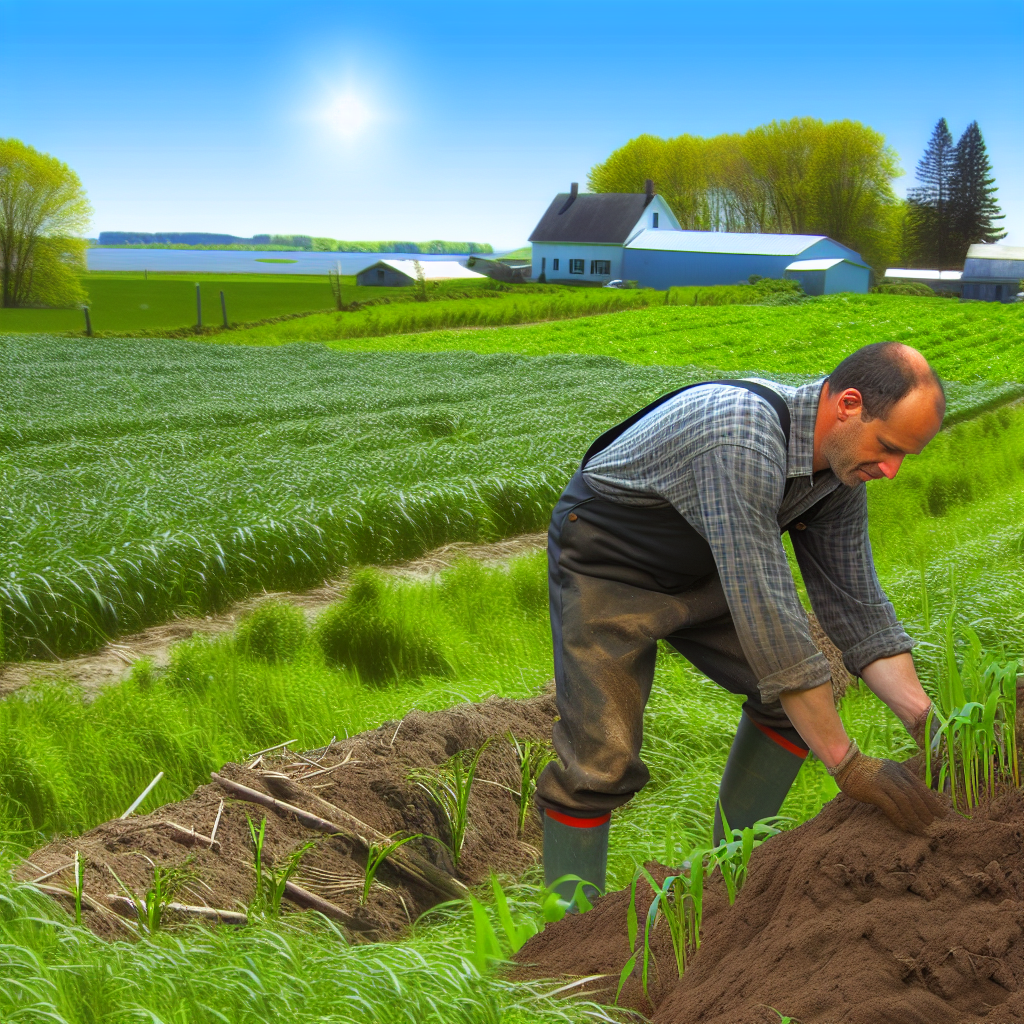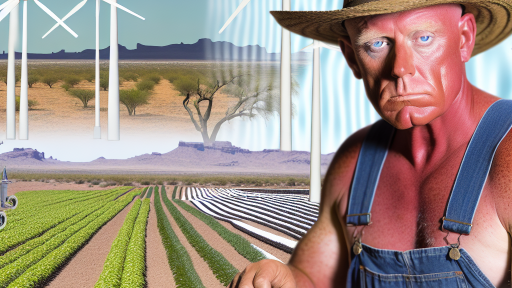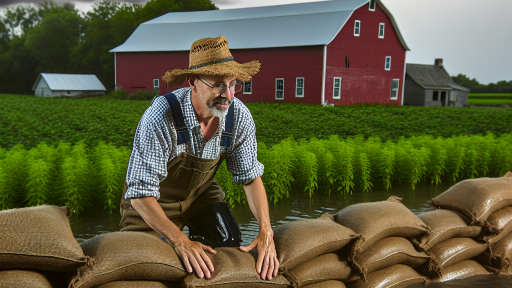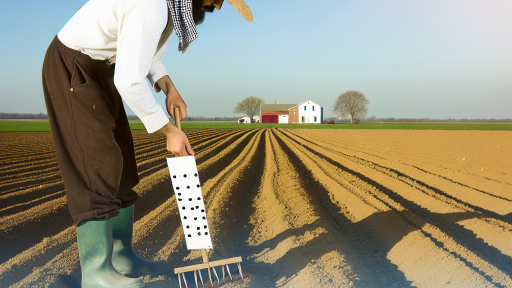Introduction to Buffer Zones and Their Importance in Flood Management
Buffer zones play a vital role in flood management strategies.
They act as protective barriers for agricultural lands.
These zones help absorb excess water during heavy rainfall.
Additionally, they reduce soil erosion in vulnerable areas.
Implementing buffer zones supports sustainable farming practices.
Definition of Buffer Zones
Buffer zones are areas of land maintained in vegetation.
They typically lie between agricultural fields and water bodies.
These vegetative strips help manage water flow effectively.
How Buffer Zones Mitigate Flood Risks
Increased rainfall can overwhelm agricultural land.
Buffer zones absorb water and reduce runoff.
This process minimizes the risk of flooding in crop areas.
Moreover, they filter pollutants from stormwater runoff.
As a result, water quality improves, benefiting ecosystems.
Benefits of Implementing Buffer Zones
- Enhances soil health by preventing erosion.
- Supports local wildlife habitats and biodiversity.
- Improves agricultural resilience to climate change.
- Provides aesthetic value to farming landscapes.
Case Studies and Examples
Many farmers have successfully implemented buffer zones.
For instance, Emily Johnson from Green Valley Farms saw improved yields.
Transform Your Agribusiness
Unlock your farm's potential with expert advice tailored to your needs. Get actionable steps that drive real results.
Get StartedShe credited buffer zones for reducing nutrient runoff.
Such practices have gained recognition in various regions.
Understanding Flood Risks
Recent Flooding Events
Recent flooding events demonstrate the significant impact of water on agriculture.
In 2021, heavy rainfall in the Midwest caused widespread damage to crops.
Farmers reported losing thousands of acres of corn and soybean production.
Similarly, a devastating flood in the South resulted in substantial losses for local farms.
This event highlighted the risk of extreme weather patterns due to climate change.
Case Study: Midwest Flooding
The Midwest flood of June 2021 serves as a critical example.
Farmers in Iowa faced saturation of their fields after days of relentless rain.
Reports indicate that many lost entire seasons of crops overnight.
Local authorities struggled to provide immediate assistance during the crisis.
This case underlines the need for proactive flood risk management strategies.
Case Study: Southern Flooding
In the South, the flooding of August 2020 was equally catastrophic.
Farmers in Louisiana lost livestock and infrastructure due to rising waters.
Emergency declarations followed, but recovery proved lengthy and costly.
Many farmers reported being underinsured, complicating financial recoveries.
Such events necessitate tighter preparation measures for agriculture.
Analyzing the Costs
Flooding events have lasting economic impacts on farming communities.
Crop loss due to flooding translates to reduced yield and revenue.
Infrastructure repairs can burden local economies for years.
Therefore, understanding these costs is vital for future planning.
Importance of Flood Preparedness
Farmers must prioritize flood preparedness to mitigate risks.
Implementing buffer zones can create a crucial line of defense.
Additionally, contingency planning can provide a framework for response.
Showcase Your Farming Business
Publish your professional farming services profile on our blog for a one-time fee of $200 and reach a dedicated audience of farmers and agribusiness owners.
Publish Your ProfileThis planning ensures farmers remain resilient in the face of flooding.
Types of Buffer Zones
Definition of Buffer Zones
Buffer zones serve as protective barriers.
They help reduce the impact of flooding on farmland.
These zones typically consist of vegetation or natural landscapes.
They absorb excess water during heavy rainfall events.
Consequently, they also minimize soil erosion.
Classification of Buffer Zones
Buffer zones can be classified into various types.
Each type serves a specific purpose in flood management.
Riparian Zones
Riparian zones are vegetated areas alongside rivers and streams.
These zones filter pollutants before they reach water bodies.
Moreover, they stabilize riverbanks and protect aquatic ecosystems.
Wetlands
Wetlands act as natural sponges for floodwater.
They store excess water during heavy rains.
In addition, wetlands enhance biodiversity by providing habitats.
Grass Strips
Grass strips are narrow bands of grass planted along fields.
They capture runoff and prevent soil loss during floods.
Additionally, they improve water quality by filtering contaminants.
Tree Buffers
Tree buffers consist of rows of trees planted around fields.
These trees intercept rainfall and slow down water runoff.
Furthermore, they provide shade and habitat for wildlife.
Importance of Buffer Zones
Buffer zones are vital for sustainable farming practices.
They reduce agricultural loss by mitigating flood impact.
Moreover, they enhance the resilience of farming systems.
Implementing effective buffer zones promotes environmental health.
See Related Content: Harnessing Solar Power for Sustainable Agriculture
Benefits of Implementing Buffer Zones for Farmland Protection
Reduction of Flood Risk
Buffer zones effectively absorb excess rainwater from storms.
This natural solution helps prevent flooding of adjacent farmland.
Farmers can maintain healthy crops despite heavy rainfall.
Soil Erosion Prevention
Buffer zones stabilize the soil and minimize erosion.
They protect essential topsoil from being washed away.
This preservation enhances soil quality and fertility.
Improved Water Quality
Buffer zones filter pollutants from rainwater runoff.
They capture nutrients and chemicals before they reach waterways.
This results in cleaner water sources for irrigation.
Habitat for Wildlife
Buffer zones provide critical habitats for local wildlife.
They support biodiversity by offering shelter and food sources.
This encourages beneficial species to thrive near farms.
Long-term Cost Savings
Investing in buffer zones reduces potential damage costs from flooding.
Farmers may spend less on erosion control and water purification.
Ultimately, these savings contribute to greater farm profitability.
Showcase Your Farming Business
Publish your professional farming services profile on our blog for a one-time fee of $200 and reach a dedicated audience of farmers and agribusiness owners.
Publish Your ProfileGain More Insights: Protecting Crops: Best Water Management Practices
Designing Effective Buffer Zones
Size Considerations
Buffer zones must be large enough to absorb floodwater effectively.
The size often depends on the surrounding landscape and soil characteristics.
Wider zones offer increased absorption and protection for crops.
Farmers should evaluate historical flooding patterns to determine ideal widths.
Location Selection
Choosing the right location for buffer zones is crucial for their effectiveness.
Placing buffers along natural drainage paths can significantly reduce flood risk.
Additionally, areas with lower elevations often require more extensive buffers.
Collaboration with local environmental experts can aid in this decision-making process.
Vegetation Selection
The right plants enhance the functionality of buffer zones.
Native plants are often best as they adapt to local conditions.
These plants help stabilize soil and reduce erosion during flooding events.
Growers can consult with agronomists to choose suitable species.
Diversity in plant species can provide additional ecological benefits.
Implementation Strategies
Establishing buffer zones requires careful planning and execution.
Farmers should map out their fields and identify vulnerable areas.
A phased approach to planting can help distribute costs over time.
Regular maintenance is essential to ensure the health and effectiveness of buffers.
Monitoring the buffer’s performance allows for necessary adjustments.
Delve into the Subject: Enhancing Soil Health to Reduce Farming Emissions
Integrating Buffer Zones into Existing Farm Management Practices
Understanding Buffer Zones
Buffer zones serve as protective barriers for crops.
They mitigate the impact of flooding and runoff on farmland.
Moreover, these zones promote biodiversity by providing habitat for wildlife.
Designing Effective Buffer Zones
Start by assessing the topography of your land.
Identify areas prone to flooding or erosion.
Next, select appropriate vegetation for your buffer zones.
Native plants often require less maintenance and support local ecosystems.
Integrating Buffer Zones into Farming Operations
Incorporate buffer zones into your overall land management strategy.
Establish clear boundaries to define these areas.
Additionally, educate farmworkers about the importance of these zones.
This knowledge helps maintain the zones effectively over time.
Maintaining Buffer Zones
Regular maintenance ensures buffer zones function properly.
Schedule periodic assessments to evaluate plant health.
Remove invasive species that threaten native vegetation.
Consider planting additional vegetation as needed.
Monitoring Impact on Farm Yield
Keep track of changes in yield following buffer zone implementation.
Compare data before and after establishing these zones.
This analysis will provide insight into their effectiveness.
Use this information to make further improvements.
Collaborating with Local Experts
Seek advice from agricultural extension services about buffer zone implementation.
Showcase Your Farming Business
Publish your professional farming services profile on our blog for a one-time fee of $200 and reach a dedicated audience of farmers and agribusiness owners.
Publish Your ProfileThese professionals can offer tailored recommendations based on local conditions.
Additionally, collaborate with conservation groups focused on improving water quality.
Community Engagement and Education
Engage your community in discussions about the benefits of buffer zones.
Host workshops to educate neighbors on sustainable farming practices.
Encourage collaboration among local farmers to increase area-wide benefits.
This approach can strengthen community ties and promote shared goals.
Discover More: Integrating Wetlands for Natural Flood Control on Farms

Regulatory Frameworks and Funding Opportunities for Farmers
Understanding Regulatory Frameworks
Regulatory frameworks guide farmers in flood management strategies.
Different levels of government create these regulations.
Local, state, and federal laws work together to protect agricultural land.
Farmers must stay informed about these regulations.
Compliance can lead to enhanced flood prevention efforts.
Additionally, adapting to regulations can improve farm resilience.
Federal Programs for Flood Prevention
The federal government offers several programs to support farmers.
One key program is the Agricultural Conservation Easement Program.
This program helps protect wetlands and restore natural waterways.
Farmers can apply for grants through this initiative.
Moreover, the USDA provides funding for conservation practices.
Flood insurance options are also available through federal programs.
State and Local Assistance
States often allocate funds specifically for flood risk reduction.
Local governments administer these funds for community projects.
Farmers can connect with state agricultural departments.
These departments offer resources about local funding and programs.
In addition, community partnerships can enhance funding opportunities.
Collaboration with local conservation boards is beneficial.
Exploring Private Sector Initiatives
Private sector organizations often support farmers with resources.
They provide funding and technical assistance for flood mitigation.
Businesses focused on sustainability may offer grants for projects.
Some private companies partner with farmers for innovative solutions.
Networking within industry associations can reveal new funding sources.
Importance of Education and Training
Farmers benefit from training in flood prevention strategies.
Educational programs ensure farmers understand available resources.
Workshops and seminars can enhance awareness about regulatory changes.
Additionally, farmers can share knowledge through peer networks.
Staying informed helps farmers adapt to changing conditions effectively.
Monitoring and Maintaining Buffer Zones
Importance of Regular Monitoring
Regular monitoring safeguards the effectiveness of buffer zones.
It helps in identifying any potential issues early.
Farmers can assess the health of vegetation routinely.
Moreover, monitoring enhances wildlife habitat quality.
Tools for Effective Monitoring
Utilizing technology streamlines the monitoring process.
Showcase Your Farming Business
Publish your professional farming services profile on our blog for a one-time fee of $200 and reach a dedicated audience of farmers and agribusiness owners.
Publish Your ProfileFor example, drones can capture aerial imagery quickly.
This imagery allows farmers to analyze vegetation health remotely.
Soil moisture sensors also provide critical data insights.
Farmers can assess moisture levels and irrigation needs.
Best Practices for Maintenance
Regular maintenance promotes buffer zone resilience.
Farmers should remove invasive species frequently.
This action helps protect native biodiversity.
Additionally, replanting native vegetation supports local ecosystems.
Using organic fertilizers can enhance soil quality over time.
Challenges in Maintenance
Some challenges make maintenance difficult.
For instance, funding for maintenance projects often falls short.
Weather events can disrupt planned maintenance activities.
Furthermore, human resources may be limited in rural areas.
Community and Educational Initiatives
Engaging the community fosters better buffer zone management.
Workshops can educate farmers on best practices.
Collaboration with local universities can enhance research efforts.
Community involvement can lead to shared resources and support.
Increased awareness boosts participation in maintenance efforts.
Community Involvement and Education on Flood Mitigation Strategies
Importance of Local Engagement
Community involvement is crucial for effective flood mitigation.
Local residents possess valuable knowledge about their land.
Engaging them ensures that strategies are relevant and practical.
Moreover, it fosters a sense of ownership in the community.
Educational Programs
Educational initiatives increase awareness about flood risks.
Workshops can inform farmers about best practices for flood protection.
Additionally, schools can integrate flood education into their curriculum.
Collaboration with local universities can enhance educational efforts.
Collaboration with Local Organizations
Partnering with local organizations strengthens flood mitigation efforts.
Nonprofits can provide resources and expertise in flood management.
These partnerships also extend outreach to more community members.
Furthermore, they can assist in obtaining funding for projects.
Utilizing Social Media
Social media platforms can amplify educational messages effectively.
They offer a quick way to disseminate information to a broad audience.
Furthermore, social media can facilitate community discussions about flood strategies.
Engagement through these platforms fosters a collaborative spirit.
Encouraging Volunteer Opportunities
Volunteer programs can mobilize community members for flood mitigation tasks.
Activities might include planting vegetation in buffer zones.
Volunteering promotes a deeper understanding of flood issues.
Additionally, it creates strong community bonds through teamwork.
Additional Resources
Nonpoint Source: Agriculture | US EPA
International Climate Impacts | Climate Change Impacts | US EPA
Showcase Your Farming Business
Publish your professional farming services profile on our blog for a one-time fee of $200 and reach a dedicated audience of farmers and agribusiness owners.
Publish Your Profile



